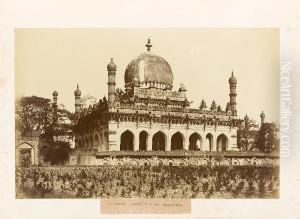Philip Meadow Taylor Paintings
Philip Meadows Taylor was not primarily known as an artist, but rather as a British administrator in India and a novelist. Born on September 25, 1808, in Liverpool, England, Taylor went on to have an extensive career in India where he worked for the Nizam of Hyderabad's government in various capacities.
Taylor's time in India began when he was sent there at the age of 15 to work for a mercantile firm. However, he soon left the firm to join the service of the Nizam of Hyderabad. His career was diverse; he undertook roles as an administrator, engineer, and even participated in military operations. His firsthand experience with colonial administration and his interactions with Indian society provided him with rich material for his later literary works.
Although not an artist by profession, Taylor's artistic sensibilities were evident in his written works. He is best known for his novel 'Confessions of a Thug' published in 1839, which is a fictional account of Thuggee cults in India and is based on his experiences and observations. This book was one of the first to introduce British readers to the concept of Thuggism and was influential in shaping the perceptions of British colonialists regarding Indian society and culture.
Taylor's involvement in literature and administration continued throughout his life. He authored several other novels, including 'Tara: A Mahratta Tale' (1863) and works on Indian history and culture. His writing often depicted the complexities of Indian society and the challenges of British rule. He was also engaged in archaeological pursuits and had a keen interest in Indian antiquities, which he studied and wrote about.
Philip Meadows Taylor retired from his position in India in 1860 and returned to England, where he continued to write until his death. He passed away on May 13, 1876, in Menton, France. Although not remembered as an artist in the traditional sense, Taylor's literary contributions have provided valuable insights into the cultural and historical landscape of 19th-century colonial India.
